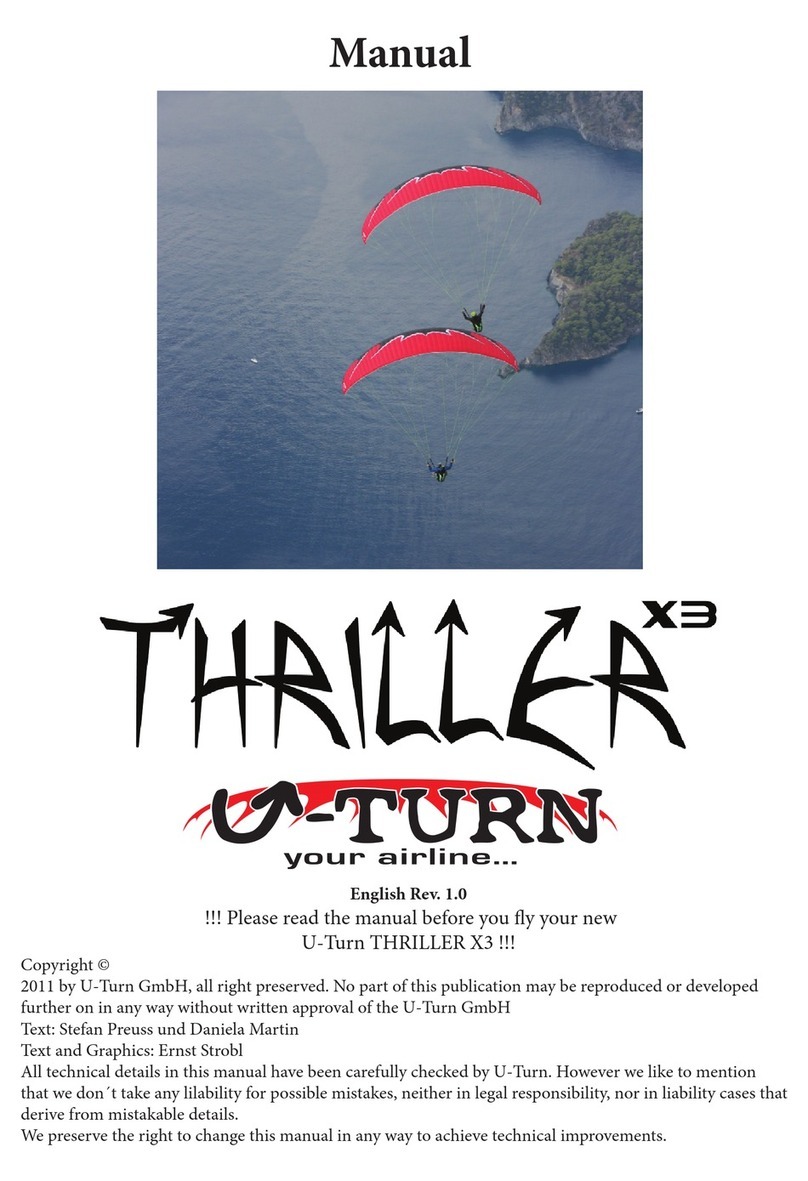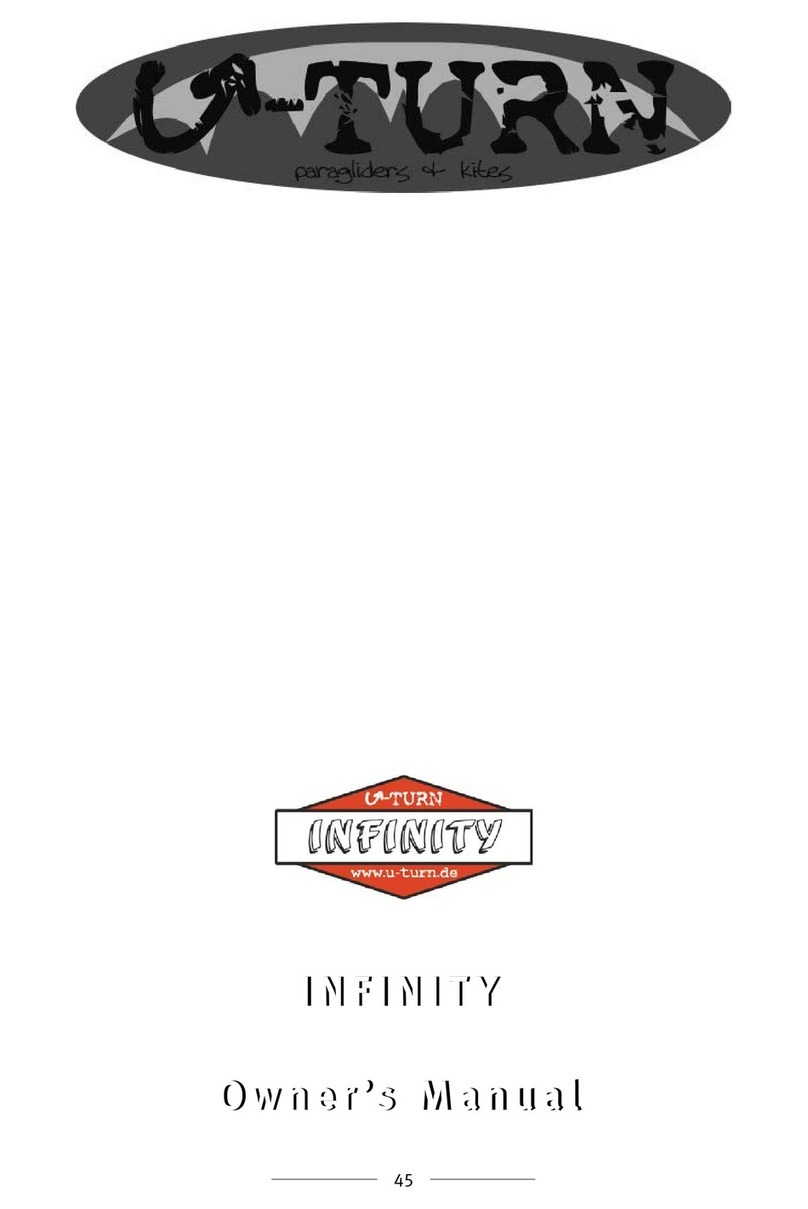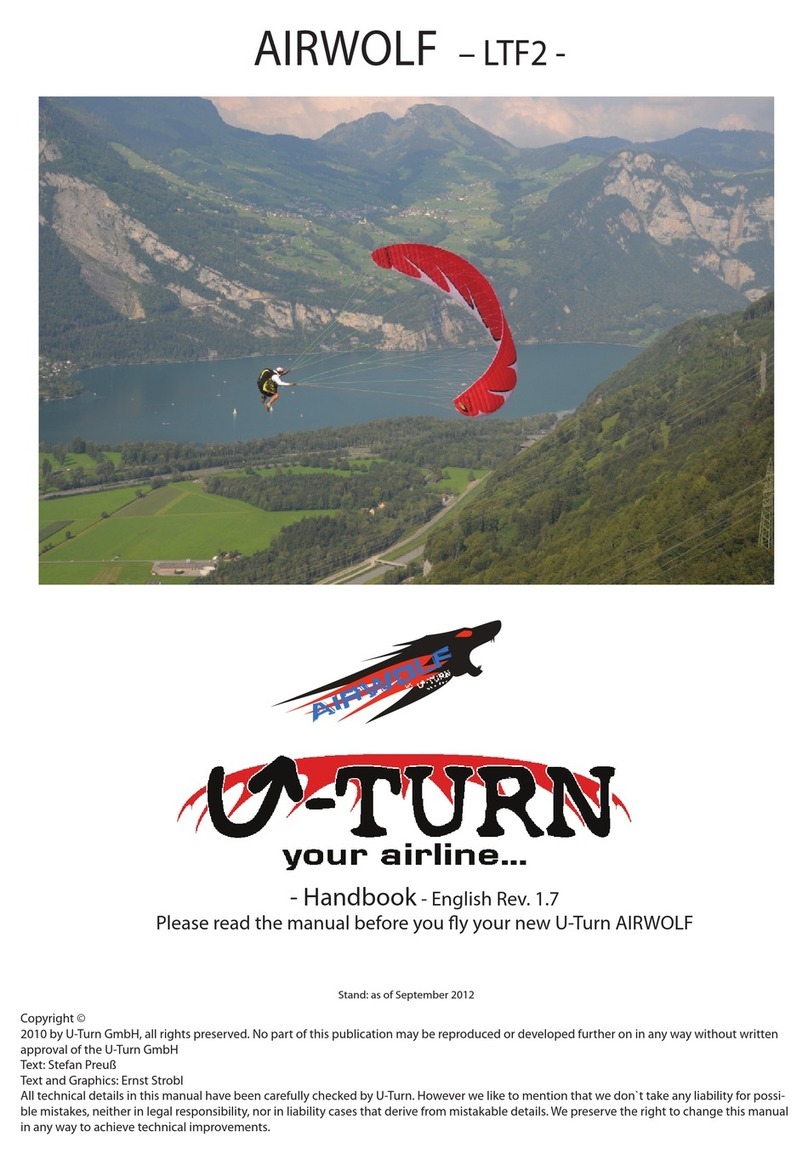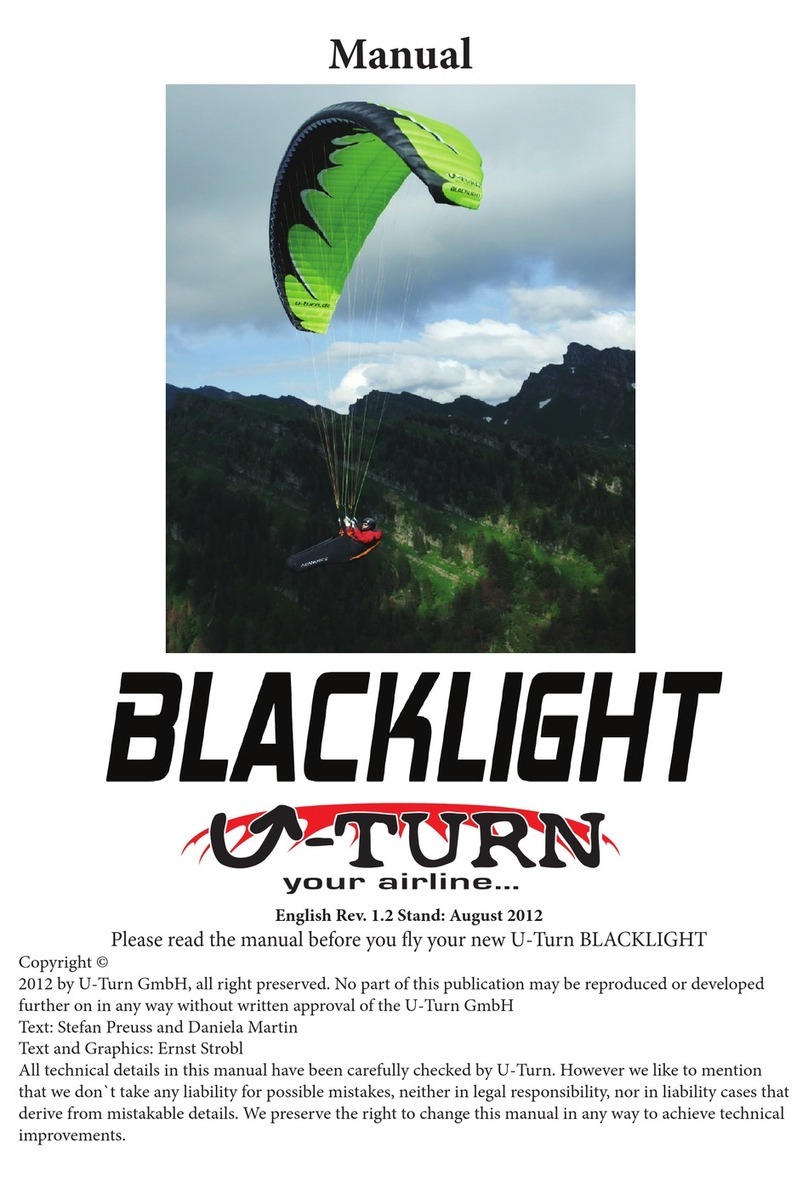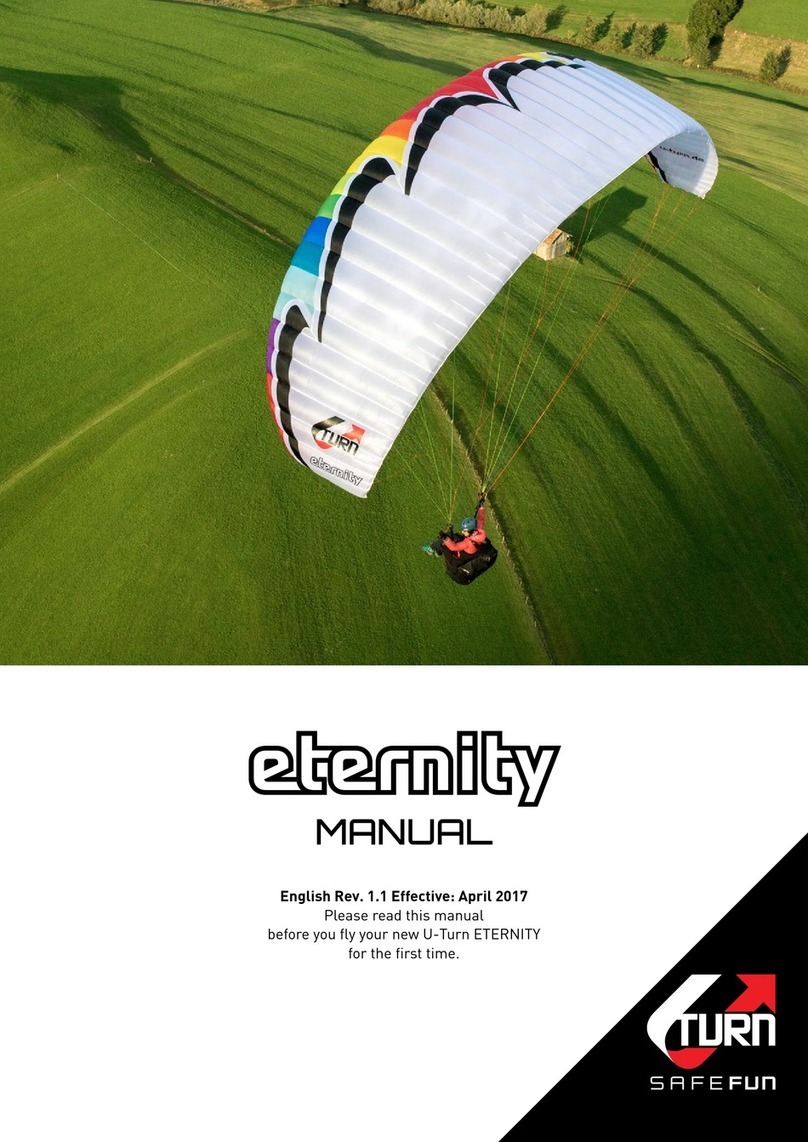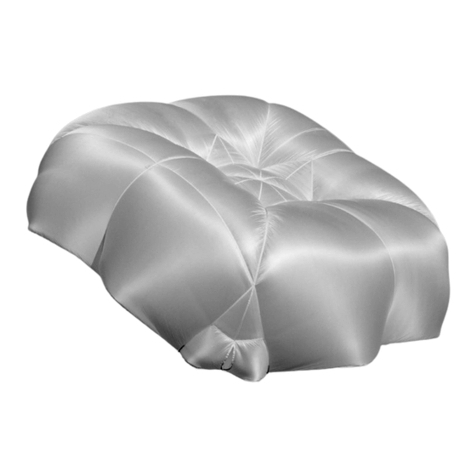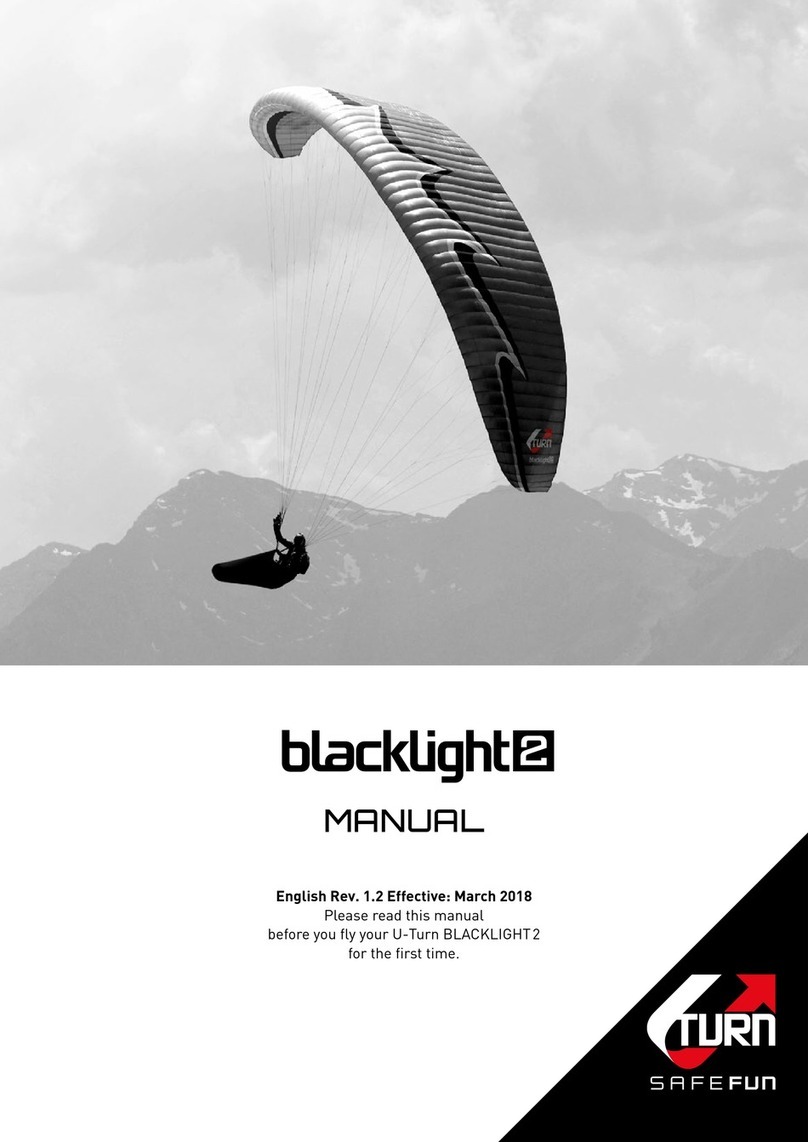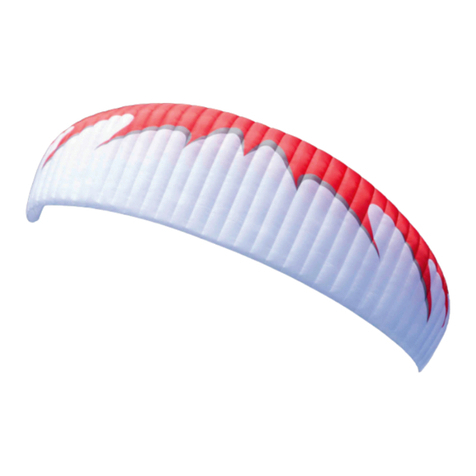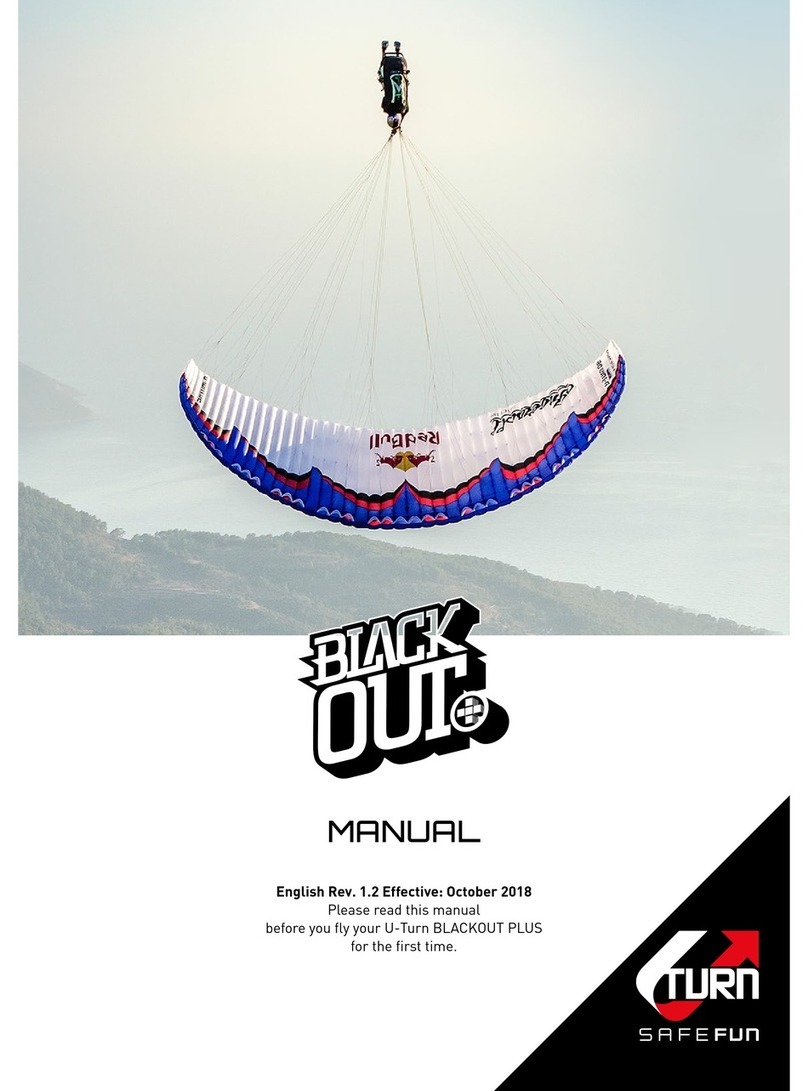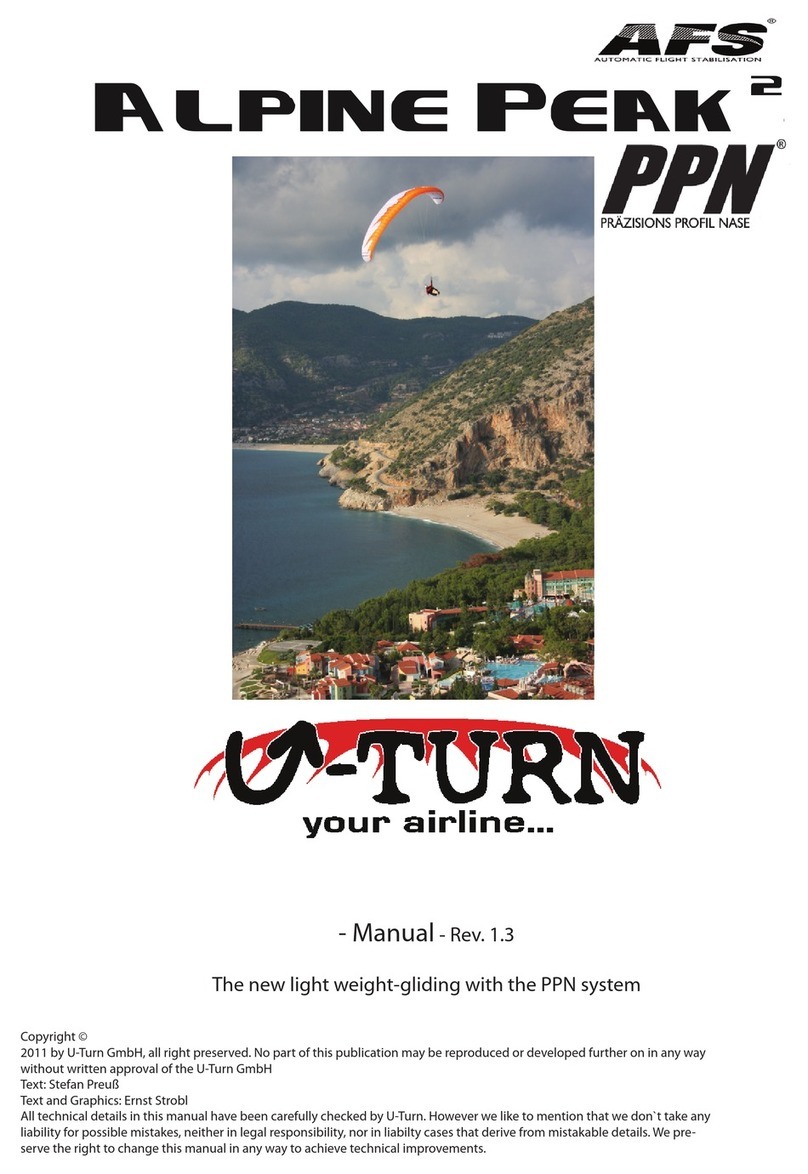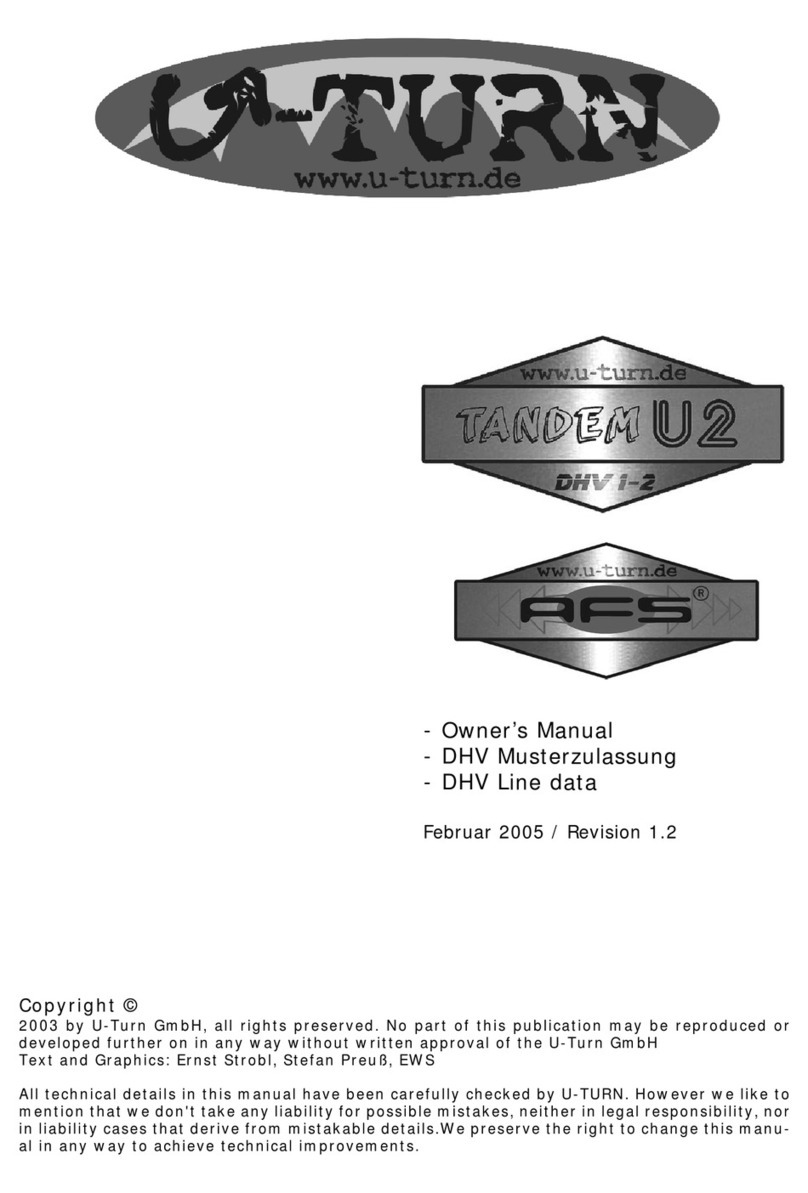Contents
Introduction....................................................................................................................................
PPN Description and Automatic ight stabilizatin (AFS)...............................................
Page 1
Page 3-4
Linesystem and Risers................................................................................................................ Page 5-6
Speed System................................................................................................................................ Page 7
Suitable Harness and Rescue .................................................................................................. Page 7
Page 7
Page 7
Page 8
Page 8
Gerneral Description - FREE FORCE 3................................................................................... Page 2
Page 9
Page 9
Operation.......................................................................................................................................
Page 9
Range of Operation....................................................................................................................
Page 9-10
Aerobatics......................................................................................................................................
Page 10
Motorised Paragliding ..............................................................................................................
Page 10
Preight Check ............................................................................................................................
Page 10
Take o ...........................................................................................................................................
Page 10
Turning ...........................................................................................................................................
Page 11
Active Flying .................................................................................................................................
Page 11
Landing ..........................................................................................................................................
Page 11
Winching .......................................................................................................................................
Page 11
Advanced Handling................................................................................................................
Page 11-12
Wingovers........................................................................................................................................
Page 12
Full Frontal......................................................................................................................................
Page 13
Deep Stall ......................................................................................................................................
Page 13
Fullstall............................................................................................................................................
Page 13
Emergency Piloting ....................................................................................................................
Page 14
Negativ Turn.................................................................................................................................
Collaps ............................................................................................................................................
How to avoid collapses - by Ernst Strobl ............................................................................
Rapid Cescent ..............................................................................................................................
B-Stall...............................................................................................................................................
Spiral Dive ......................................................................................................................................
“Big Ears” ........................................................................................................................................
Maintenance and Care .............................................................................................................
Page 7
Page 8
Safety Advices and Liability ..................................................................................................... Page 15
Nature and environment friendly behavior ...................................................................... Page 15
Removal ......................................................................................................................................... Page 15
Table of area loading -Materiallist FREE FORCE 3............................................................. Page16
Page 17
Page 18
Technical Data ..............................................................................................................................
Line Code Info ..............................................................................................................................
Line plan FREE FORCE 3.........................................................................................................
Certication FREE FORCE 3 22..........................................................................
Certication FREE FORCE 3 24..........................................................................
Certication FREE FORCE 3 26..........................................................................
Page 19
Page 20-21
Page 24-25
Page 22-23
